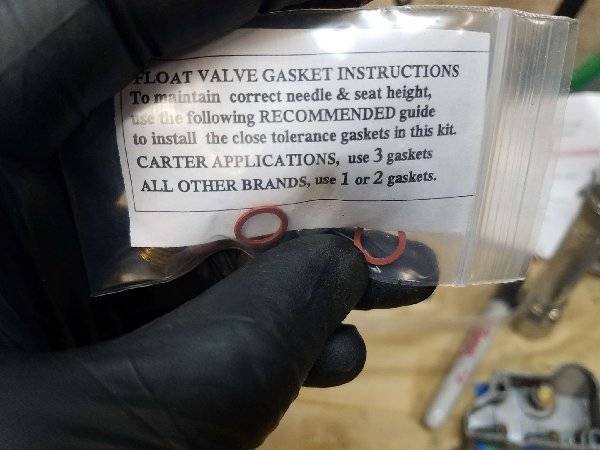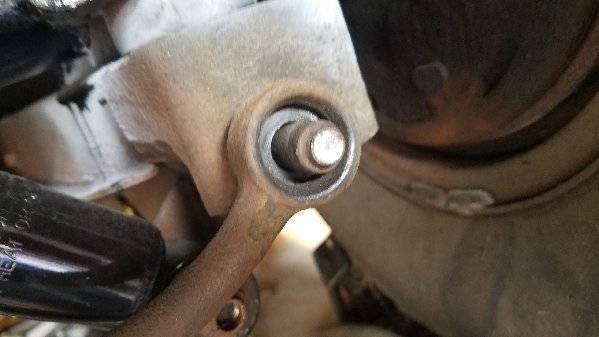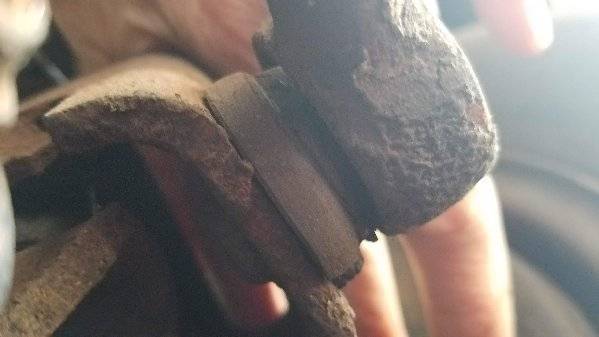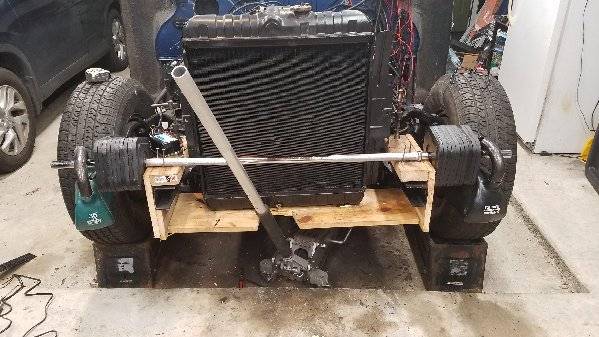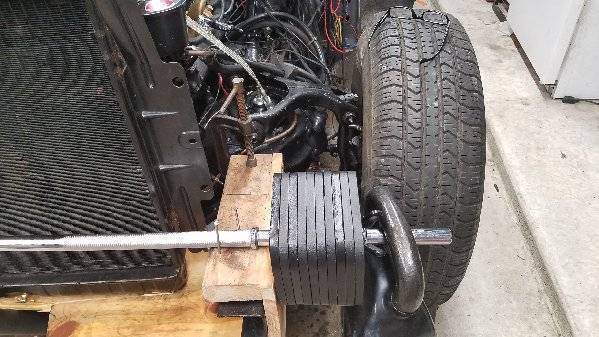|
Needle and Seat
|
||||
|---|---|---|---|---|
|
Home away from home
|
While I have him on the phone, I will also ask him about the seats and the gaskets. The packaging says to use 3 of the little gaskets for a Carter carb. Not sure what is in there now is original or correct, but 3 of the new ones are definitely thicker than the existing one. Here's a pic of them side by side. 2 of them would be closer to what is there now, but I don't know if what is there now is correct.
I am assuming it would make a big difference and there would be a different needle displacement for the same float level. Last question for tonight: how tight do you torque all the screws, jets, seats etc? I know most are brass and therefore soft. But many of these were barely snug. I am planning on getting them good and snug, but not overdo it to deform the brass heads/slots etc. thanks for listening..
Posted on: 2018/5/1 22:56
|
|||
|
Bob
1955 Packard Patrician Sapphire Blue |
||||
|
||||
|
Re: Bob's '55 Patrician Blog
|
||||
|---|---|---|---|---|
|
Home away from home

|
The number of round gaskets under the seats is not important. When you set the float level/drop by bending tabs on the brass floats it is acommodated for
Thanks James From Kanter Auto Products
Posted on: 2018/5/2 17:12
|
|||
|
||||
|
Re: Bob's '55 Patrician Blog
|
||||
|---|---|---|---|---|
|
Home away from home
|
I've rebuilt many WCFB carburetors but this is the first I've seen a kit with the need for multiple gaskets! But regardless, the floats must be adjusted so won't matter much.
Posted on: 2018/5/2 18:21
|
|||
|
All generalities are false.
Once I thought I was wrong but I was mistaken. Don Pierson Packard / IMPERIAL page CA DMV Licensed Vehicle VIN Verification 1951 Henney-Packard 3-Door Long Wheelbase Air Force Ambulance The 1951 Henney-Packard is For Sale! 1954 Packard Patrician 1954 Packard Patrician Parts Car 1956 Clipper Custom Sedan |
||||
|
||||
|
Re: Bob's '55 Patrician Blog
|
||||
|---|---|---|---|---|
|
Home away from home
|
Guys, thanks for the help. I just watched a YouTube video (youtube.com/watch?v=3C8P7Oy7h3g ) of a WCFB rebuild and the guy had the same exact little float needle package with the same recommendation sheet. In his case, 3 gaskets required a lot of float adjustment, but when he used 2, the adjustment was minor as it was close to the previous values.
As long as knowledgeable carb people are here, what to do with the pump inlet check ball. The kit comes with 2 balls plus a new ball retainer. The generic diagram shows a ball used for carbs that also have an attached starter mechanism so I think I only have 1 to replace. But with that 1, how do I get the ball retainer out and the new one back in? Also, do you ever lubricate any of the moving parts that are internal (like the shafts through the main body or airn horn, etc)? thanks again!
Posted on: 2018/5/2 20:34
|
|||
|
Bob
1955 Packard Patrician Sapphire Blue |
||||
|
||||
|
Broken Watts Linkage stud
|
||||
|---|---|---|---|---|
|
Home away from home
|
While seeing how hard it would be to remove the Watt's linkage to possibly replace the bushings (reference Heinmuller's article in the Cormorant last year), I snapped the passenger side stud trying to remove the nut. Looking at the parts plate, it seems like I need to take a lot apart to get to this stud; which looks like it is welded to the bracket assembly on the rear support arm (??)
This doesn't seem trivial to do, but maybe the instructions that comes with Heinmuller's kit (was $335 +shipping for just the rear bushings) will help get me to a place where I can replace that stud. Anyone have any lessons learned for this? I don't have the ability to weld at home, so may have to pull out the rear support arm to take somewhere. thx Note the existing bushings are very hard and need replacing.
Posted on: 2018/11/25 17:18
|
|||
|
Bob
1955 Packard Patrician Sapphire Blue |
||||
|
||||
|
Re: Broken Watts Linkage stud
|
||||
|---|---|---|---|---|
|
Forum Ambassador

|
I don't recall Dwight's instructions for the center bushings, what I chose to do was to grind off the rivet heads and drill and tap the posts for 1/4-28 and use cap screws for reassembly. The polyurethane bushings were a couple of $ each from Kanters polyflex unit.
I think the broken post has come up before, did you try a search? I'm a bit doubtful that welding is suitable for repairing.
Posted on: 2018/11/25 18:20
|
|||
|
||||
|
Re: Broken Watts Linkage stud
|
||||
|---|---|---|---|---|
|
Home away from home
|
Gerry: thanks. Replacing the whole arm may be what I have to do; although I'd not be looking forward to that.
Dave: I have not been able to find previous posts on replacing the stud itself; although a lot of good info on the Watts bushings themselves. Regarding welding, I was referring to the observation that the stud looks to be welded to the bracket on the rear support arm. If that is the case, I would need to pull the arm out to take it somewhere to cut out the existing, broken stud and have a new one welded in. (I did not mean to try to weld the broken stud back together). Wondering how much better (ride/life) Dwight's urethane bushings would be from Kanter's polyurethane ones?
Posted on: 2018/11/26 17:05
|
|||
|
Bob
1955 Packard Patrician Sapphire Blue |
||||
|
||||
|
Tightening Front Suspension bushings
|
||||
|---|---|---|---|---|
|
Home away from home
|
So, I replaced all the front bushings (upper and lower, inside and outside) Bought them from Max. With the front clip off and therefore less front weight, the upper control arm is all the way down, squishing the rubber bumper.
I was worried that if I tighten the nuts on the control arms as is, the bushings will be in a big 'twist' preload when I do re-install the front clip. So I added some weights to the front to compress the suspension to simulate the weight of the front clip. Problem is that I can move the frame up and down a few inches and it stays in any position so not sure what level is 'neutral' when it has the front clip on and a person inside. Is this a wise course of action? Or am I overthinking this. I currently have the TLR motor wires disconnected but haven't done anything mechanical to the TLR system. Any suggestions on if there is a best way to tighten the control arm bushing nuts with the front clip off to get a proper ride? thanks
Posted on: 2018/12/6 21:58
|
|||
|
Bob
1955 Packard Patrician Sapphire Blue |
||||
|
||||
|
Re: Tightening Front Suspension bushings
|
||||
|---|---|---|---|---|
|
Home away from home
|
Uh, yes you are overthinking this. Leave the nuts loose. Assemble the the car completely. Wire up the leveler and adjust it so the car sits dead level in a ready to run condition. In the last 10 minutes before you go for the test drive take your 15/16 wrench and tighten the four nuts.
Posted on: 2018/12/6 22:39
|
|||
|
||||

 (173.46 KB)
(173.46 KB)